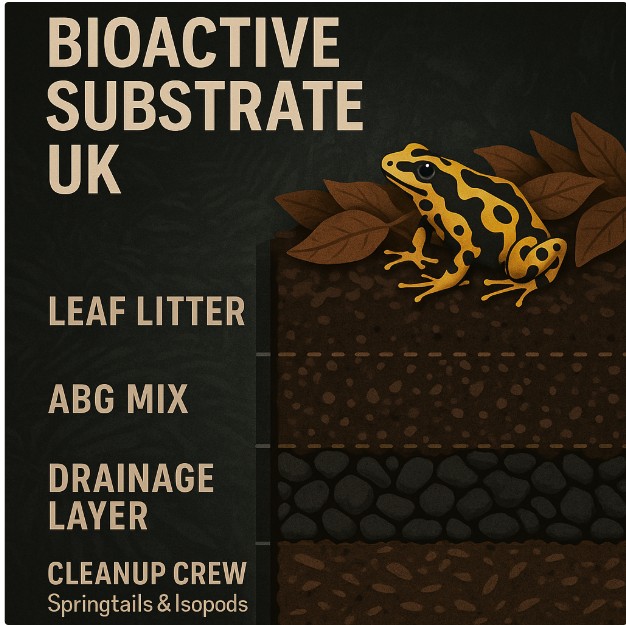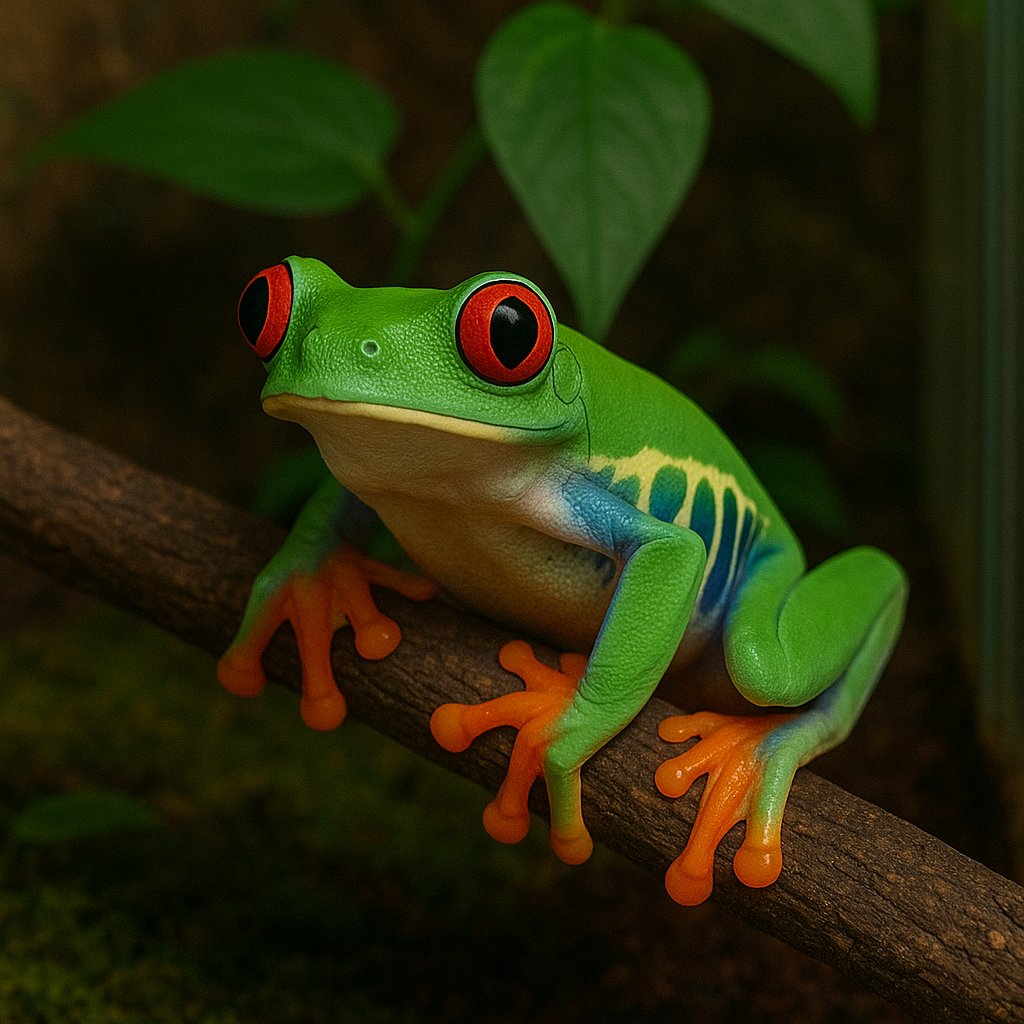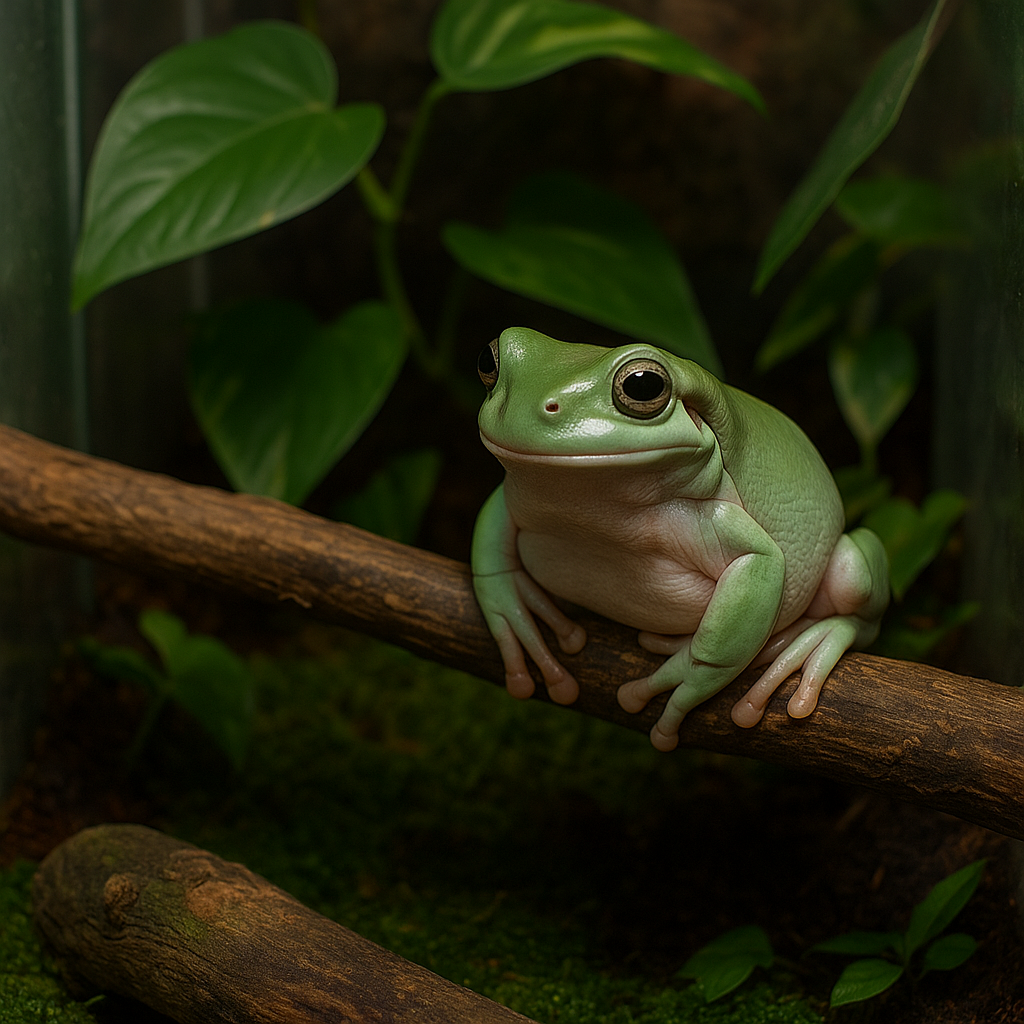If you’re serious about dart frogs, you’ll need to get your bioactive substrate sorted. It’s not just dirt. It’s the very foundation of your vivarium – holding moisture, feeding your plants, and housing your cleanup crew. Nail this part, and everything else is easier: humidity stays up, frogs stay healthy, and the tank more or less runs itself.
This guide walks you through how to build a reliable, layered substrate for UK homes. From drainage to leaf litter, we’ve got you covered.
What Is a Bioactive Substrate?
Bioactive means the substrate is alive – it breaks down waste using beneficial microfauna (like springtails and isopods) and supports plant roots. Done right, it creates a stable, self-regulating mini-ecosystem. Dart frogs love it. So do your bromeliads, mosses and orchids.
Why UK Conditions Matter
British homes get dry in winter and sweaty in summer. Central heating pulls moisture from your tank faster than you’d expect. Your substrate needs to hold humidity, drain excess water, and support life even when ambient conditions fluctuate. That’s where layering comes in.
Essential Layers (Bottom to Top)
- Drainage Layer
Start with 2–3 cm of hydroclay (expanded clay balls). This catches excess water and prevents root rot. Add a drainage mesh layer on top to keep soil from clogging it. - Substrate Mix (ABG)
Use ABG mix – a classic blend of sphagnum moss, tree fern fibre, orchid bark, and charcoal. It drains well but holds enough moisture to keep humidity up. Fill to about 5–7 cm deep depending on your tank height. - Microfauna
Add your springtails and isopods directly into the substrate. They’ll start establishing colonies quickly, especially if you feed with fish flake or powdered yeast now and then. - Leaf Litter
Top the whole thing with dried leaf litter – magnolia, oak, sea almond – a good few layers thick. It helps microfauna hide, supports natural frog behaviour, and keeps humidity stable.
Optional Add-ons
- Charcoal layer (between drainage and ABG) – helps filter water and improve odour control.
- Live moss on top – helps retain surface moisture and looks lush.
- Worms – not essential, but some keepers add tropical greyworms or dwarf white worms as bonus decomposers.
Step-by-Step: Building It Out
- Rinse your hydroclay thoroughly to remove dust.
- Layer it evenly in your tank base (about 2–3 cm deep).
- Add a mesh barrier – cut to fit your tank’s shape.
- Layer in your ABG mix – press it gently to remove large air pockets.
- Introduce springtails and isopods – spread them evenly.
- Cover with 2–3 layers of leaf litter.
- Mist everything thoroughly before introducing frogs or plants.
How Long to Let It Cycle?
Give it 2–4 weeks before adding frogs. This lets your microfauna get established and reduces the risk of mould or ammonia spikes. Add plants early and keep misting – it’ll stabilise faster with moisture and light.
Best Products for UK Builds
- Hydroclay drainage layer
- ABG substrate mix
- Springtails and isopods
- Leaf litter variety packs
Infographic: UK Bioactive Substrate Layers

Common Mistakes
- Too shallow: Thin substrate dries out fast and doesn’t support deep plant roots.
- No drainage layer: Leads to root rot, bad smells, and frog stress.
- Skipping the cycle: Don’t rush to add frogs – let the system settle.
- Wrong leaves: Avoid UK-collected garden leaves – they mould and break down too fast. Stick to dried, hard leaves like sea almond or magnolia.
Quick Maintenance Tips
- Mist daily or set up a misting system.
- Top up leaf litter monthly as it decomposes.
- Feed your cleanup crew every few weeks.
- Remove any mouldy leaf clumps – spot cleaning is normal early on.
Keep It Lively, Keep It Layered
Bioactive setups might sound intimidating at first, but once your substrate’s in place, it all becomes easy. You’ll spend less time cleaning, your frogs will thrive, and your plants will flourish.
And trust me – there’s nothing better than watching your dart frogs forage through a living floor that you built from scratch.


